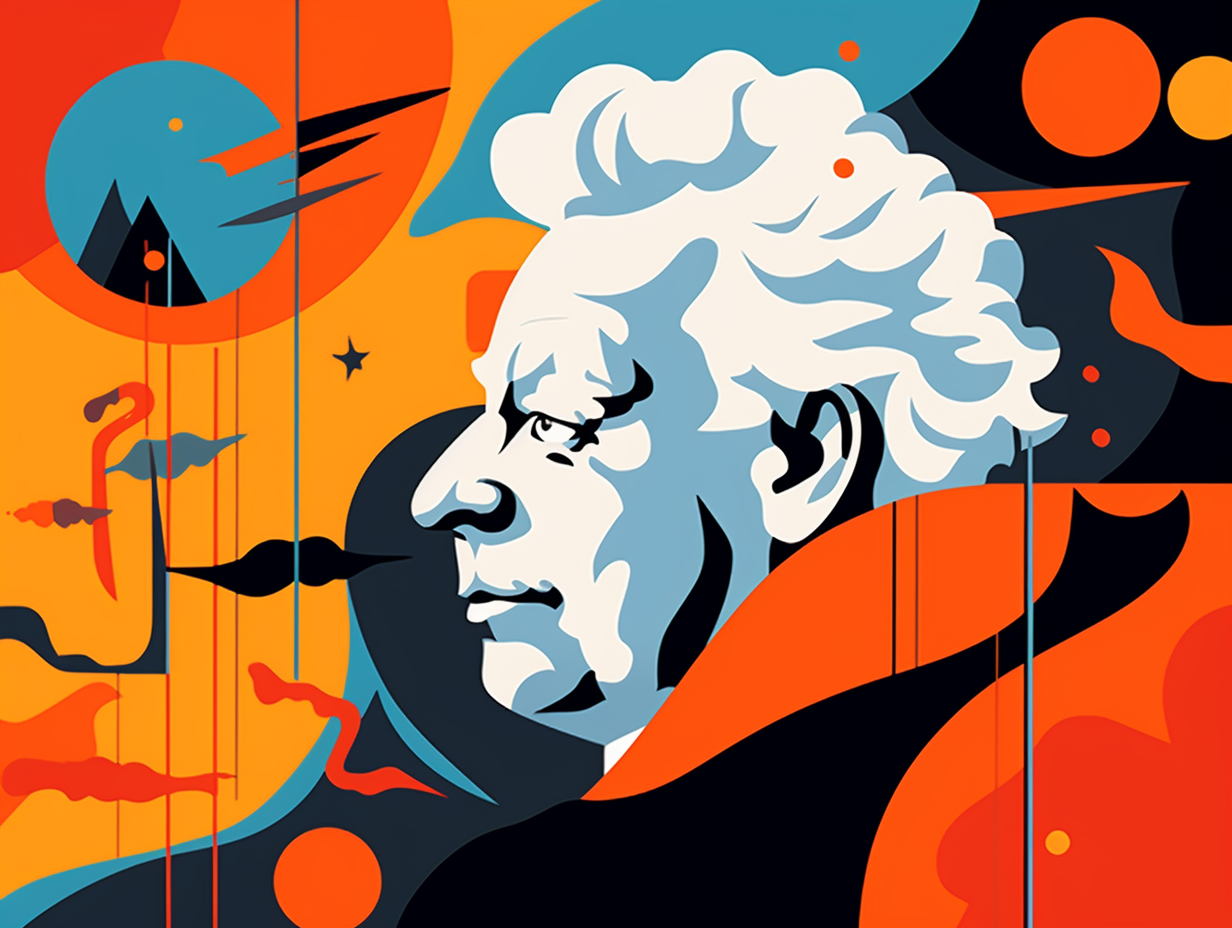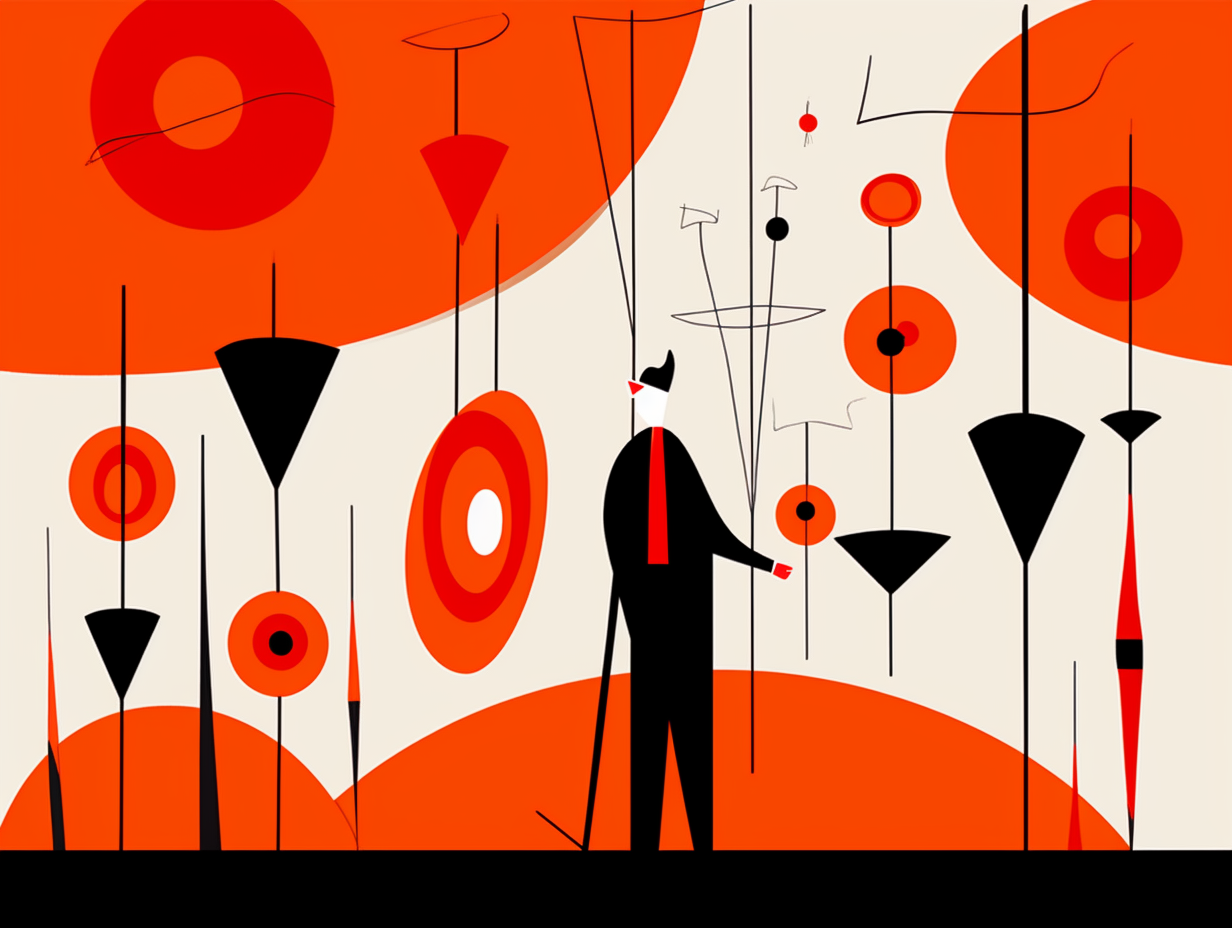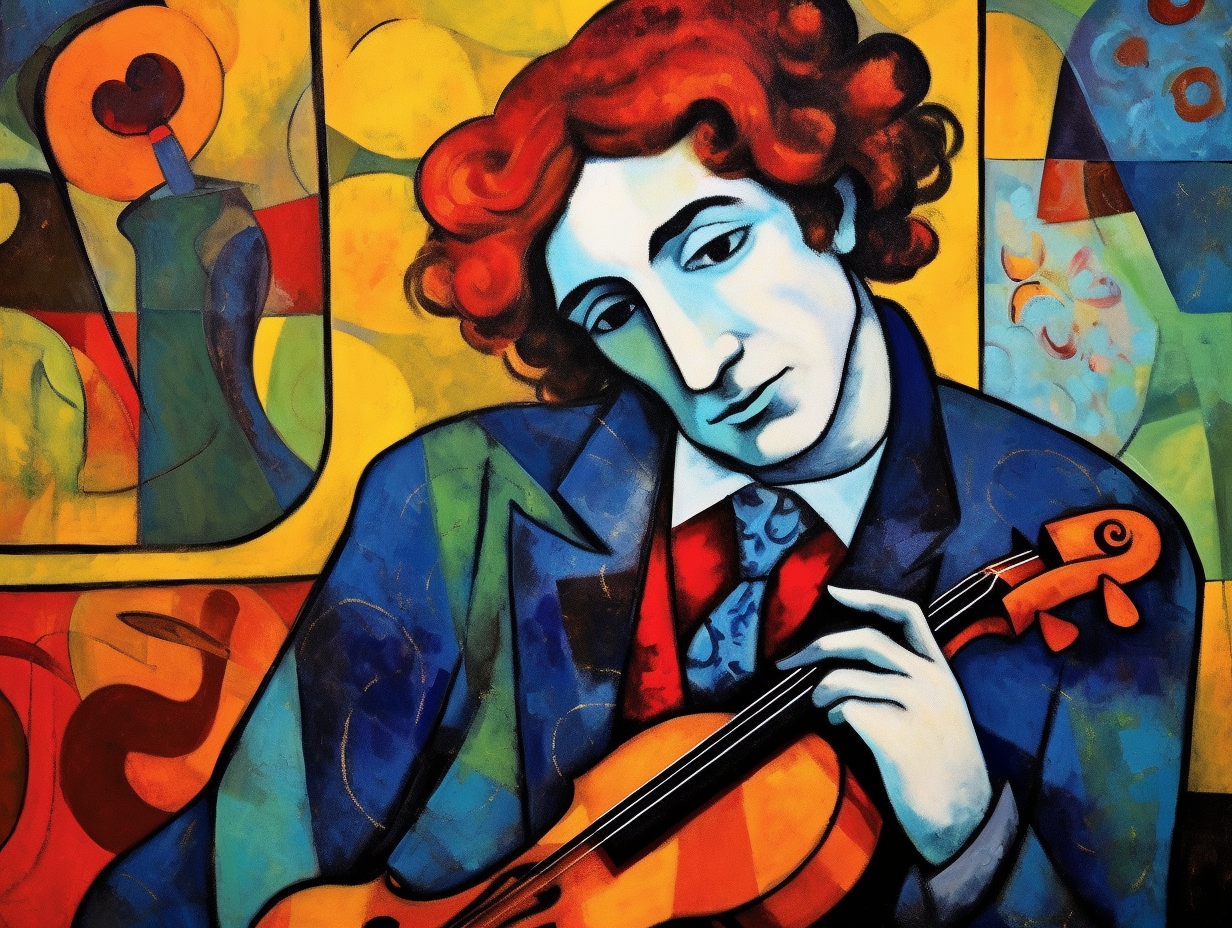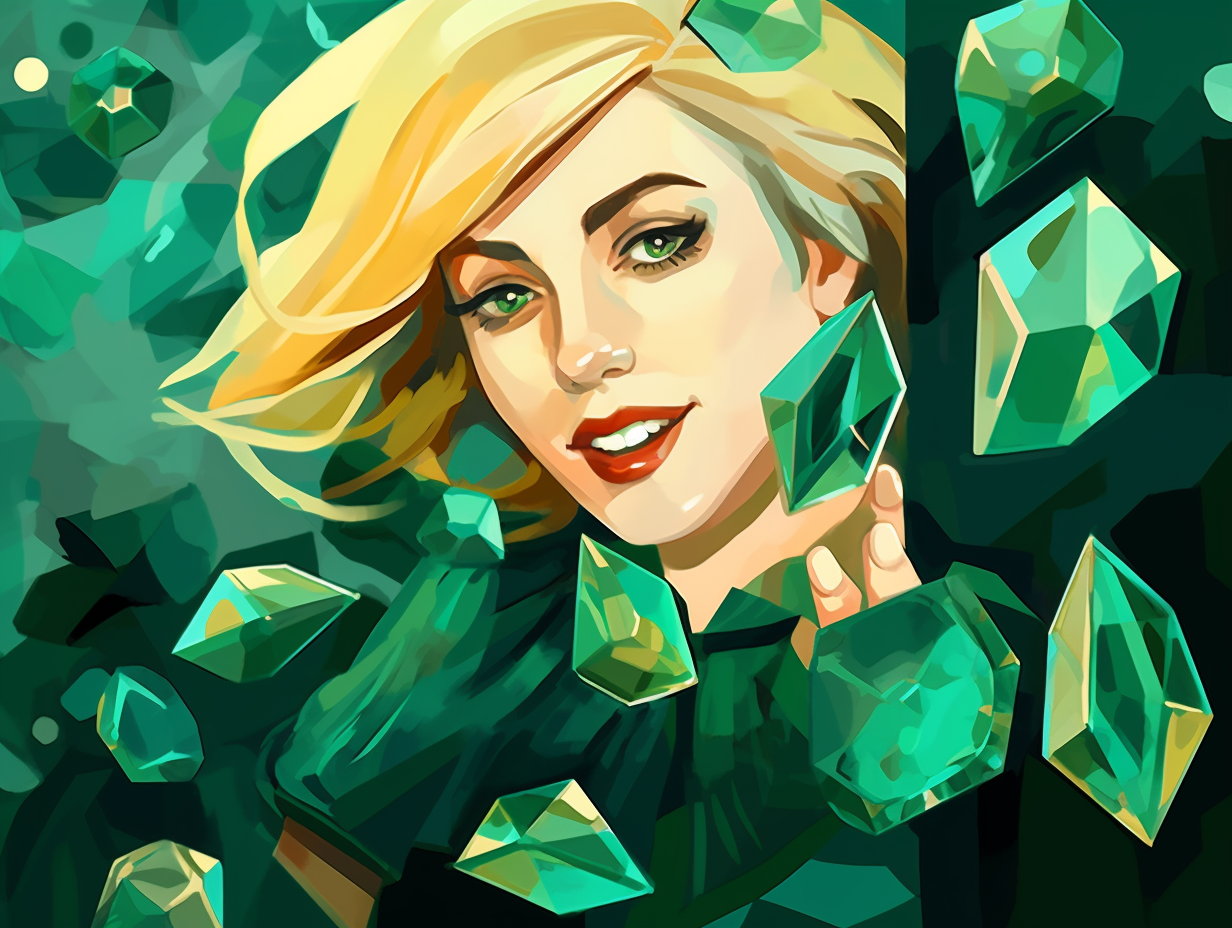Discover 14 Amazing Fun Facts About Alexander Calder: The Mobile Master & Paris Art Sensation

1. Hypermobility at the Whitney
Who needs Mobile Legends when you've got Mobile Calders: Alexander Calder took his art to another level by creating not just static mobile sculptures, but also mechanized ones that can be found at the Whitney Museum of American Art’s exhibition, Hypermobility. From delicate hanging structures to the frenzied movements of motor-driven creations, Calder's innovative works spanned the 1930s to 1950s, and the exhibition showcases unique performances and activations that have rarely been activated since his time.
Source => hyperallergic.com
2. Family of Artists
Family Tree-tists: Alexander Calder didn't just fall out of the art tree and hit every branch on the way down, oh no; he hailed from a lineage dripping with artistic talent as his father, grandfather, AND mother were all painters or sculptors, with Grandpa Calder crafting the William Penn statue perched atop Philadelphia's City Hall.
Source => searchenginewatch.com

Did you know the Statue of Liberty can sway up to 3 inches in strong winds? Discover the secret behind her flexible dance moves and thin copper sheeting exterior! 🗽💃
=> Fun Facts about Sculptures
3. The Original Mobiles
Before mobile phones took over the world, there was another, arguably much cooler "mobile" that set hearts and minds aflutter: Alexander Calder's masterful kinetic sculptures, which danced whimsically above the heads of art enthusiasts. No selfies allowed here, please: These mobiles, which feature hanging abstract components that move and balance harmoniously, were ingeniously brought to life by Calder and coined by Marcel Duchamp in 1931. Not limited to mobiles, Calder also made an impact with his heavyweight stationary installations known as stabiles, with famous commissions such as .125 for the New York Port Authority, Spirale for UNESCO in Paris, and El Sol Rojo for the Mexico City Olympics.
Source => pacegallery.com
4. Creative Chaos and Recycling
If Alexander Calder were on an episode of "Hoarders," he'd likely be crowned the king of creative chaos: this brilliant sculptor was known to scavenge for glass shards, pottery fragments, and metal chunks in the dump on his estate, transforming them into whimsical mobiles that relied on air and chance movements, disrupting the serious world of art with playfulness and humor.
Source => miacollectiveart.com

5. Wire Sculpture Wizardry
In a marvelous moment of wire wizardry, Alexander Calder proved there's more than one way to sculpt a cat – or other creatures and objects, for that matter: Calder was the first to shape wire into three-dimensional "linear sculptures," unleashing a new form of artistic magic and ultimately leading to his famous abstract mobiles.
Source => theartstory.org
6. Gravity-Defying Art Jungle
You know what they say, "monkey see, monkey do!" But when it came to Alexander Calder, he took that saying to the next level, creating a wire sculpture of a primate that would make even Tarzan blush: Calder's astonishing technical abilities allowed him to suspend his wire creations from a single thread, revolutionizing wire sculpture and turning his studio into a veritable art jungle of dancing mobiles, interacting with their surroundings, courtesy of a whisper-light breath or a mere human touch.
Source => asmedigitalcollection.asme.org
7. Calder's Magical Circus
Before Harry Potter and the Wizarding World gave us Quidditch, there was Alexander Calder's magical, gravity-defying Circus: In the 1920s, Calder created a unique version of a circus called Calder's Circus, a miniature, multi-medium performance art piece now recognized as a type of Performance Art, featuring non-traditional materials and later inspiring his breakthrough sculptural installations.
Source => journal.voca.network
8. The Great Twister Statue
Did you hear about the monumental game of Twister that almost went awry? Fear not, it was just La Grande Vitesse in Grand Rapids, Michigan: This 43-foot-tall, 42-ton behemoth of a sculpture stood proud in Calder's signature orange-red for over 50 years, until a recent restoration project controversially changed the hue to a darker red, stirring concerns from the late artist's inner circle.
Source => mlive.com
9. Engineering to Performance Art
Before discovering his true calling, Alexander Calder was caught up in a 'circus-tance' where engineering got a little 'wired': This artistic genius initially studied engineering but eventually found his niche in the arts, creating Cirque Calder - predating performance art by 40 years! Cirque Calder was a mini marvel, with tiny wire performers, animals, and props that fit snugly inside a trunk, allowing Calder to take his artistic circus worldwide and solidify his status as a pioneering performance artist.
Source => calder.org

10. Whimsical Inspiration Adventures
When artist pals go on a whimsical "whatcha-ma-call-it" hunt, great minds think alike: Alexander Calder often wandered the streets of New York and Paris with Fernand Léger searching for visual inspiration, while fostering a close friendship with Joan Miró in Paris, leading to a delightful artistic cross-pollination between their works.
Source => news.masterworksfineart.com
11. Giant Mobile Wonders
Giant sculptures that put you in a mobile state of mind: Alexander Calder is the mastermind behind record-breaking mobile sculptures like .125 at JFK Airport in New York City, standing at 45 feet / 13.5 meters, and Mountains and Clouds in the Hart Senate Office Building, which soars to 42.5 feet / 13 meters high, not to mention his largest mobile sculpture yet at a whopping 33ft (10m)! Now, that's a whole lot of artful suspension to behold!
Source => marcomahler.com
12. Locomotives to Kinetic Art
From engineering locomotives to engineering art that moves; talk about changing tracks! Alexander Calder swapped calculus for canvas and pioneered kinetic sculpture: He invented the mobile, an art form with motorized objects that intertwines movement, sound, and choreography, forever transforming the world of sculpture and serving as a symbol for freedom after World War II.
Source => liveauctioneers.com
13. Four Generations of Sculpture
You know they say 'wire' you still going on about sculpture? Well, Alexander Calder had a different twist to that: he was a fourth-generation sculptor who revolutionized the art by turning wires into three-dimensional line "drawings" of people, animals, and objects, ultimately pioneering the kinetic art movement as the uncontested master of mobile sculpture.
Source => theartstory.org
14. Duchamp's Impact on Calder
When Marcel Duchamp walked into the room, he decided that Calder’s art needed a little more "motion in the ocean": Thus, Alexander Calder's famous "mobiles" were actually not christened by the artist himself, but rather conceived by Duchamp who suggested Calder name his kinetic creations "Mobiles," a term that has since become synonymous with these tantalizing, suspended sculptures.
Source => deseret.com
Related Fun Facts




















